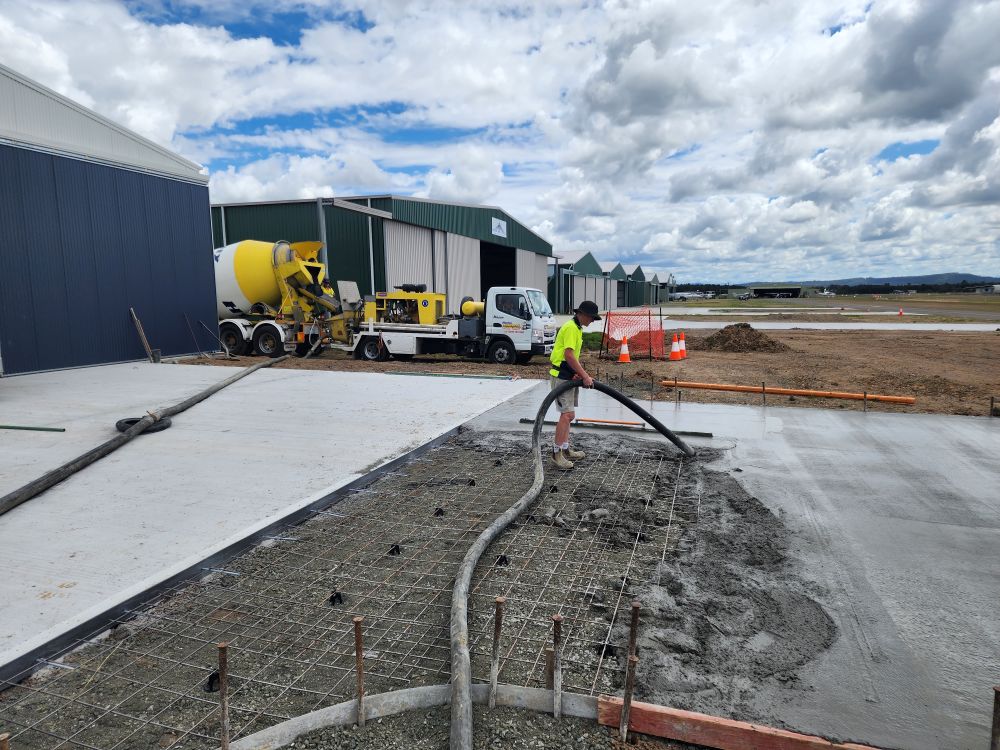Your Comprehensive Guide to Precisely Calculating Concrete Volume for Construction Projects
To achieve a reliable estimate of the concrete volume essential for your construction undertaking, utilise the straightforward yet effective formula: Length × Width × Depth. It is advisable to increase your calculations by an additional 10% to accommodate potential waste, spillage, and any uneven ground conditions that may occur during the pouring process. Should you have any uncertainties regarding your measurements or calculations, do not hesitate to reach out to Hunter Concrete Pumps, who can offer expert guidance to ensure your estimates are not only accurate but also customised to meet your specific project requirements.

Mastering the Standard Volume Calculation Formula for Concrete Projects
When engaging with concrete, the measurement is traditionally expressed in cubic metres (m³). To accurately assess the quantity required for a concrete slab or foundation footing, simply apply the formula provided below:
Length (m) × Width (m) × Depth (m) = Volume (m³)
Before embarking on any calculations, ensure that all dimensions are converted into metres. For instance, if you have a slab measuring 8 metres in length, 5 metres in width, and a thickness of 100mm (which converts to 0.1m), the calculation would be as follows:
8 × 5 × 0.1 = 4.0m³
It is crucial to refrain from ordering the precise calculated volume. Always round up your order by 10% to account for potential wastage, irregularities in the formwork, or any spillage that may occur during the concrete pumping process. Therefore, in this scenario, you should aim to order 4.4m³ of concrete to guarantee an adequate supply of material for your project.
Insightful Volume Guide for Common Slab Sizes and Their Material Requirements
| Slab Size (m) | Thickness (mm) | Volume (m³) | Add 10% Overrun | Final Order (m³) |
| 4 × 4 | 100 | 1.6 | 0.16 | 1.8 |
| 6 × 6 | 100 | 3.6 | 0.36 | 4.0 |
| 8 × 5 | 100 | 4.0 | 0.40 | 4.4 |
| 10 × 6 | 150 | 9.0 | 0.90 | 9.9 |
| 12 × 10 | 100 | 12.0 | 1.20 | 13.2 |
Effective Strategies for Accurately Calculating Volume in Various Scenarios
- Strip Footings: When determining the volume for strip footings, adhere to the standard method of multiplying length, width, and depth. However, be aware that footings can often differ in size. In such instances, breaking the task into smaller segments can improve accuracy and ensure that you account for all variations effectively.
- Circular Slabs or Pads:
For calculating the volume of circular slabs, utilise the formula: π × radius² × depth. For example, if you have a pad with a diameter of 3m and a depth of 100mm, the calculation would be:
π × (1.5)² × 0.1 ≈ 0.71m³. Remember to include an additional 10% for overrun to guarantee sufficient material availability. - Heavily Reinforced Slabs:
In cases of slabs that incorporate substantial reinforcement with dense rebar or mesh, the required volume may slightly decrease. Our experienced team is available to assist you in making the necessary adjustments to your calculations to ensure they align with your project’s specific requirements.
Need Expert Assistance with Your Concrete Volume Calculations? Get in Touch with Us!
If you are uncertain about the precise quantity of concrete required for your project, please provide us with your slab dimensions, footings plan, or PDF drawings. Contact us for a detailed and accurate quote tailored to your specific needs. We will handle the calculations, ensure appropriate rounding, and even coordinate the concrete mix if you decide to utilise our pumping crew. Hunter Concrete Pump Hire offers services throughout the Newcastle area, The Hunter Valley, and a substantial part of the Central Coast. We are committed to supporting you in achieving success in your construction projects!
Your Reliable Source for Concrete Pump Hire in Newcastle
The Article: Estimating Concrete Volumes Accurately for Pumping first appeared on https://writebuff.com
The Article Accurate Estimating of Concrete Volumes for Pumping Was Found On https://limitsofstrategy.com

